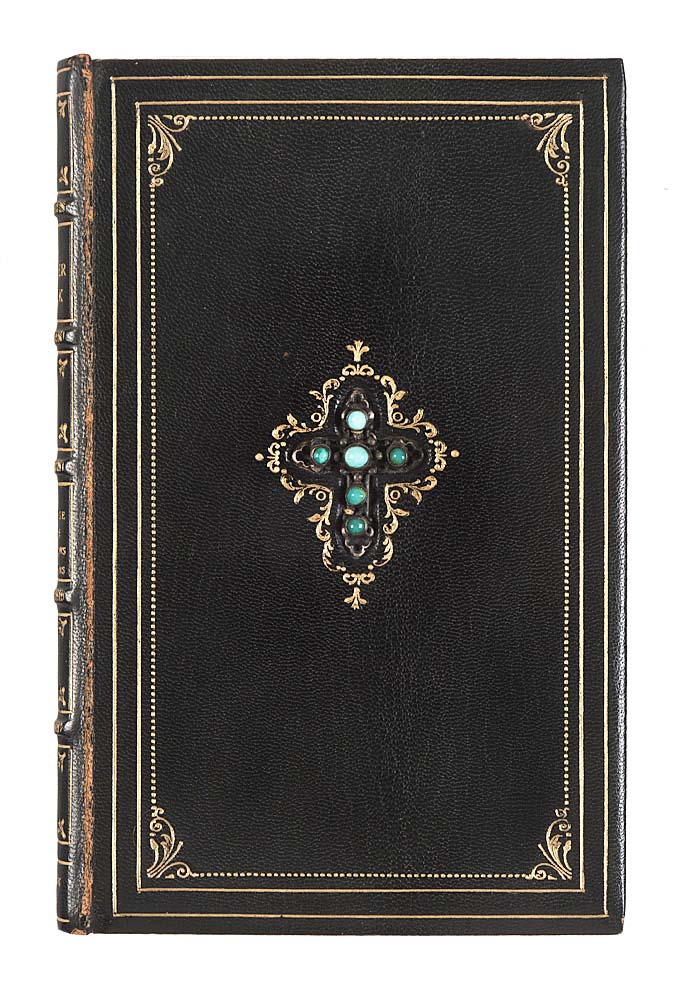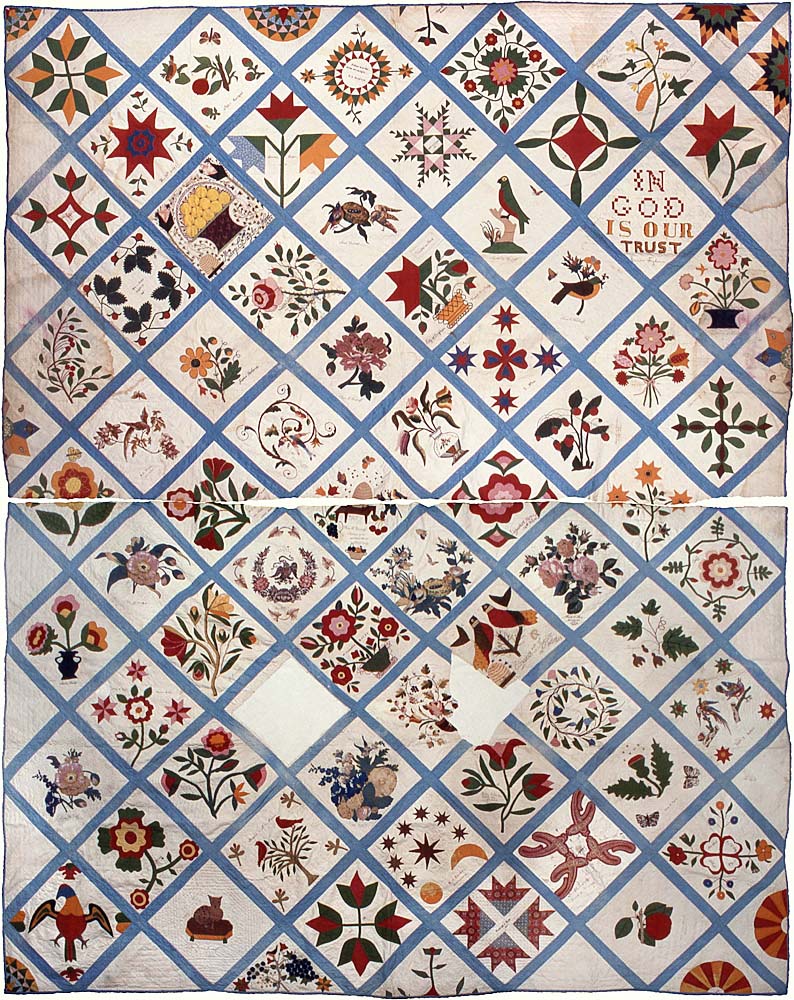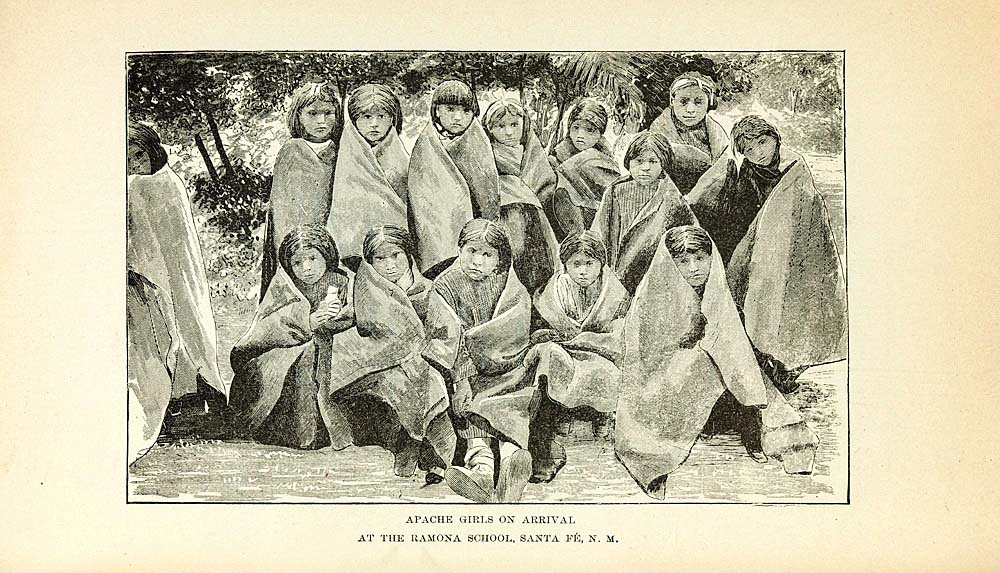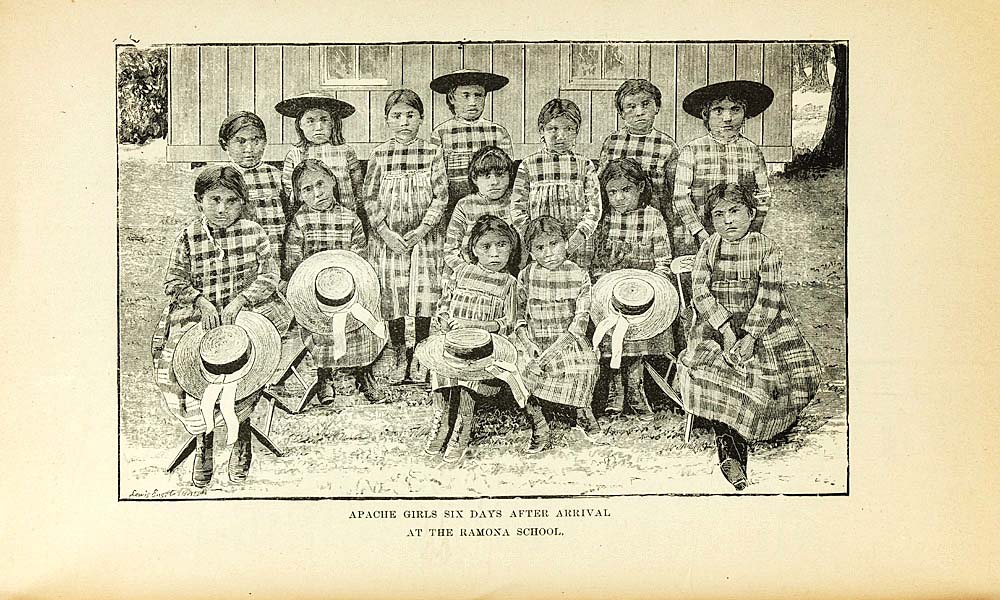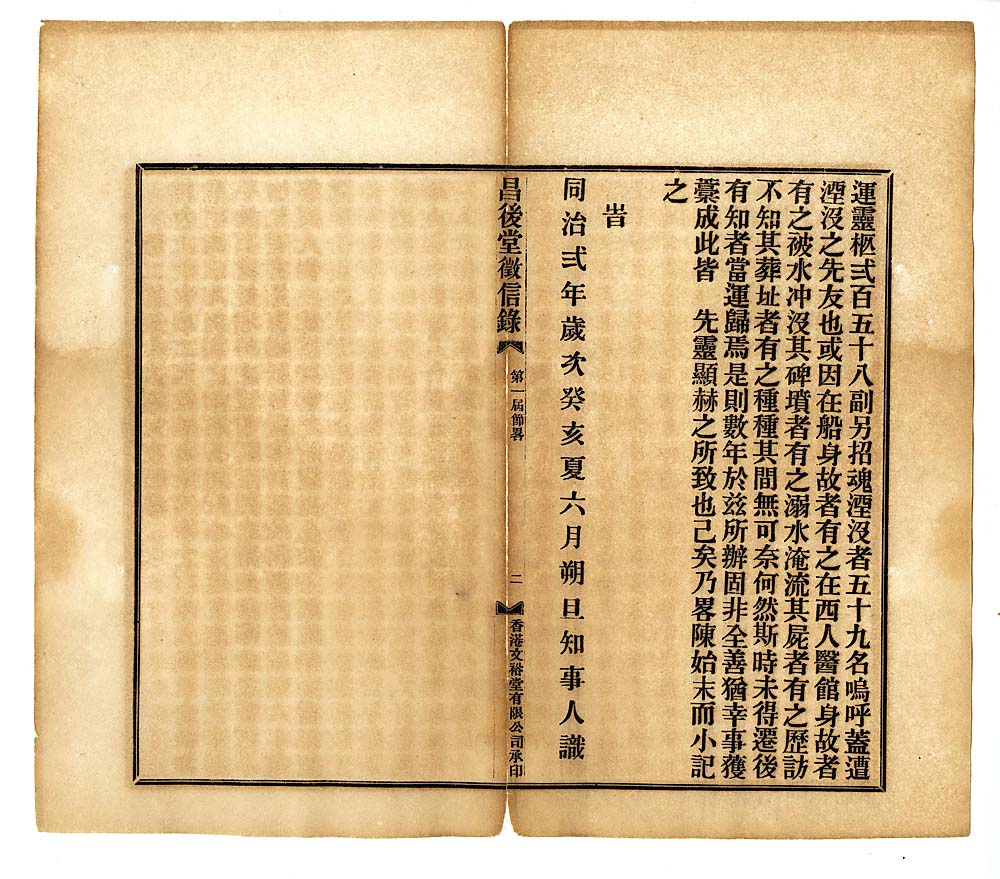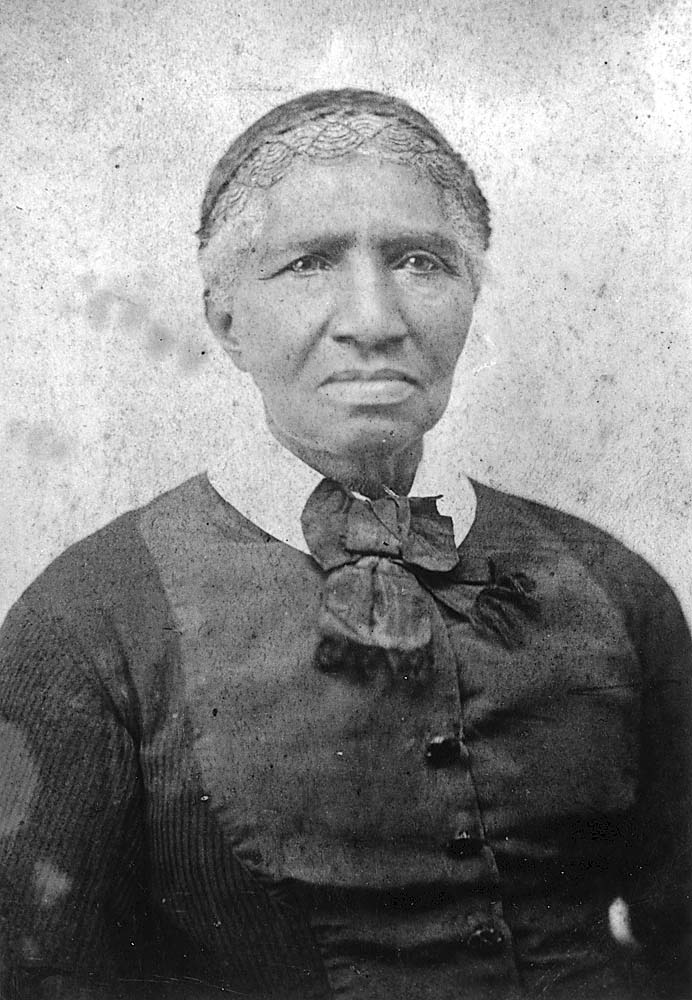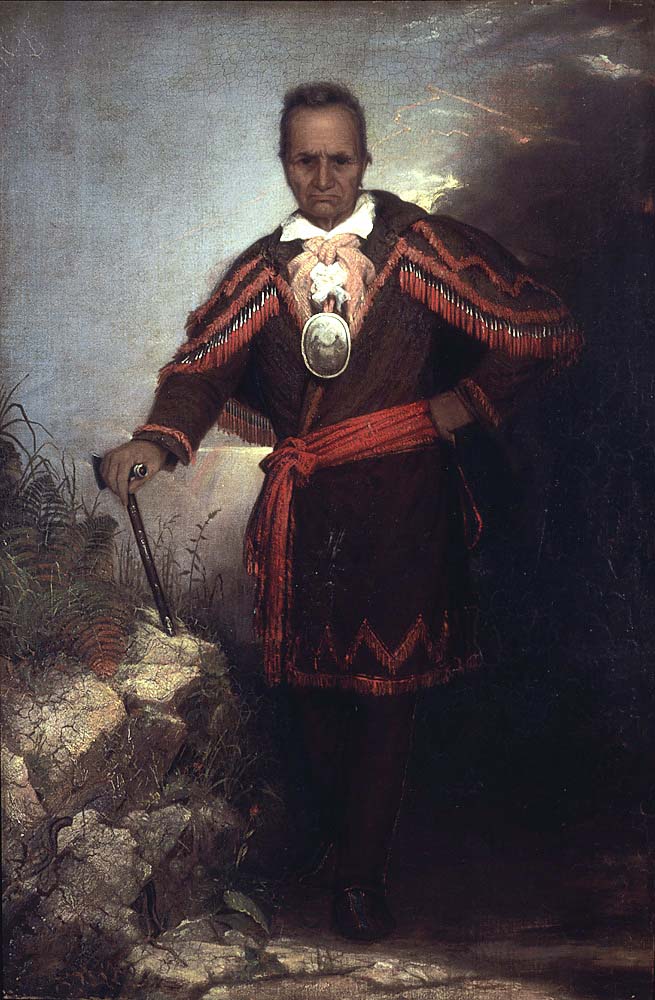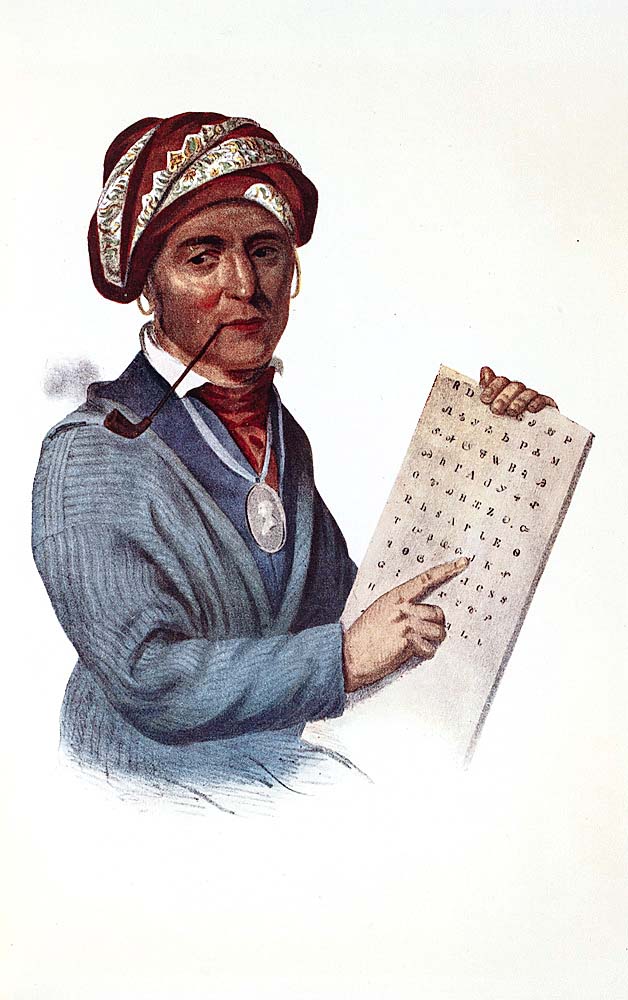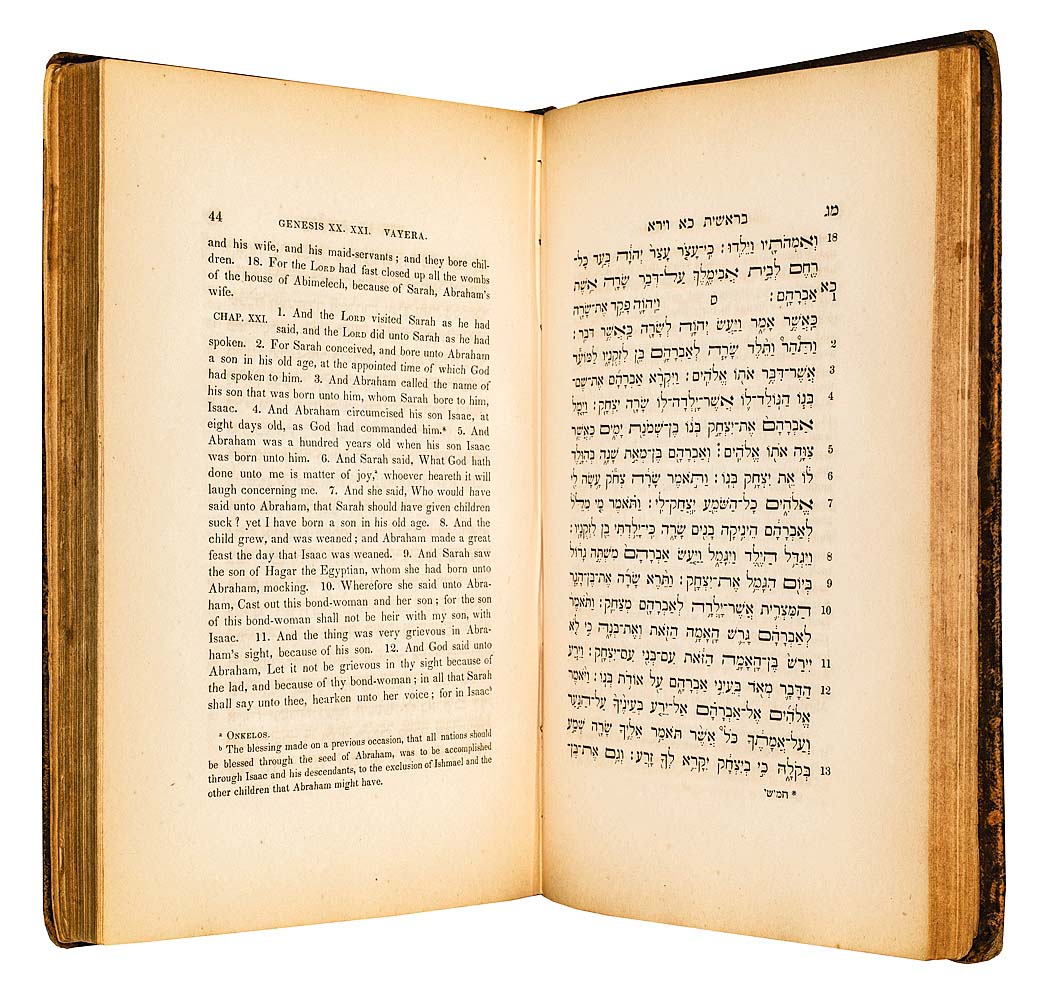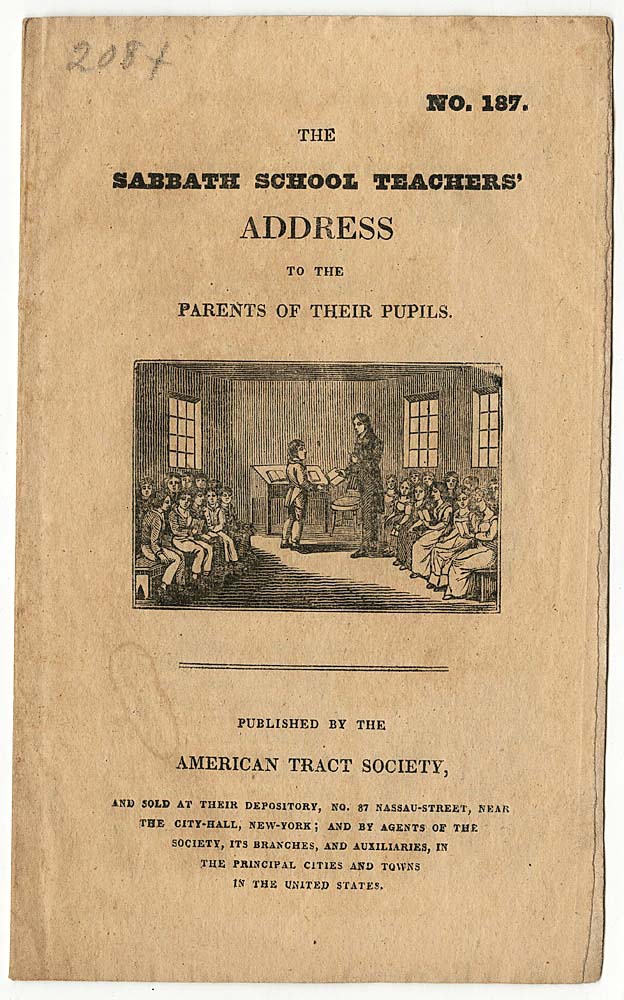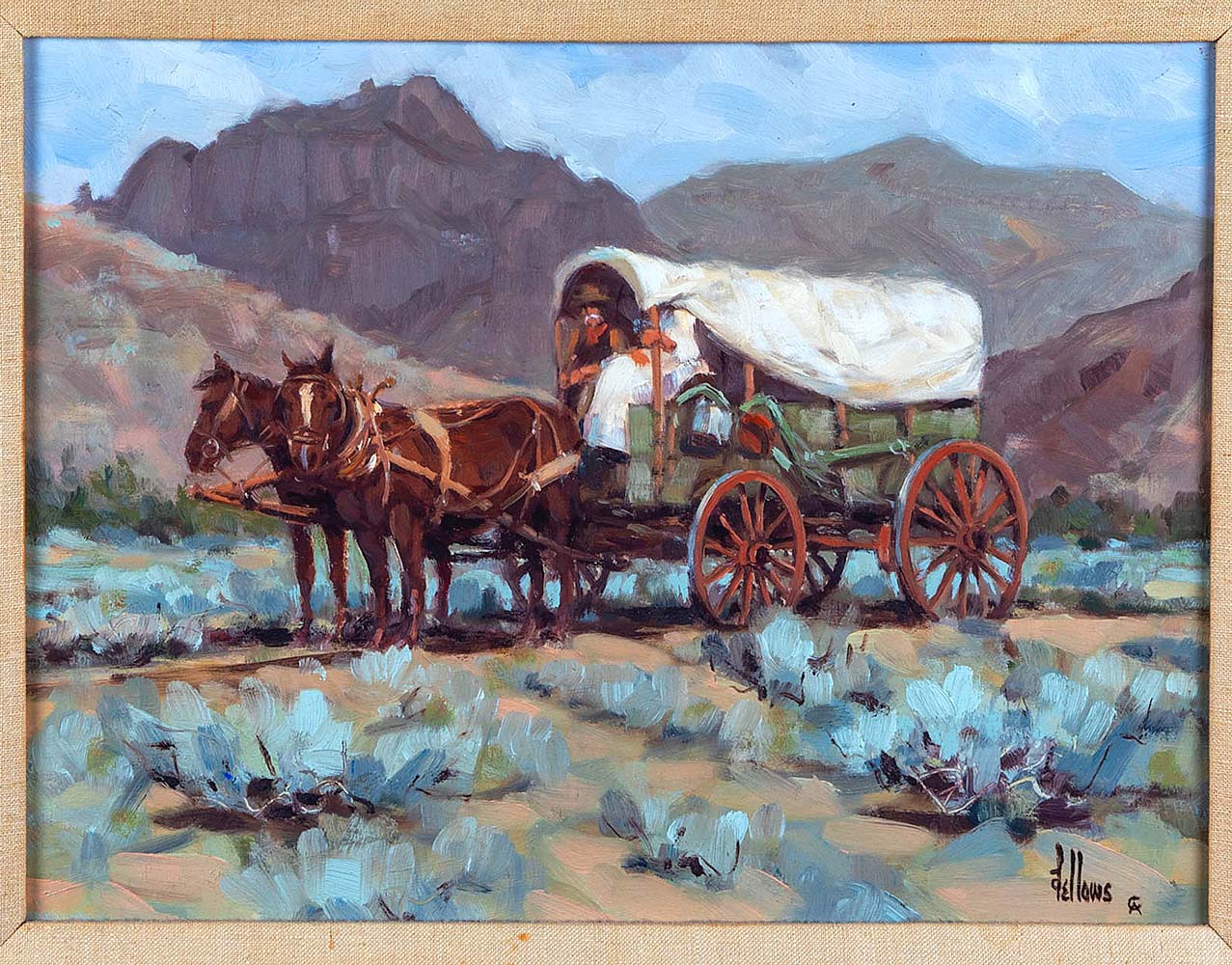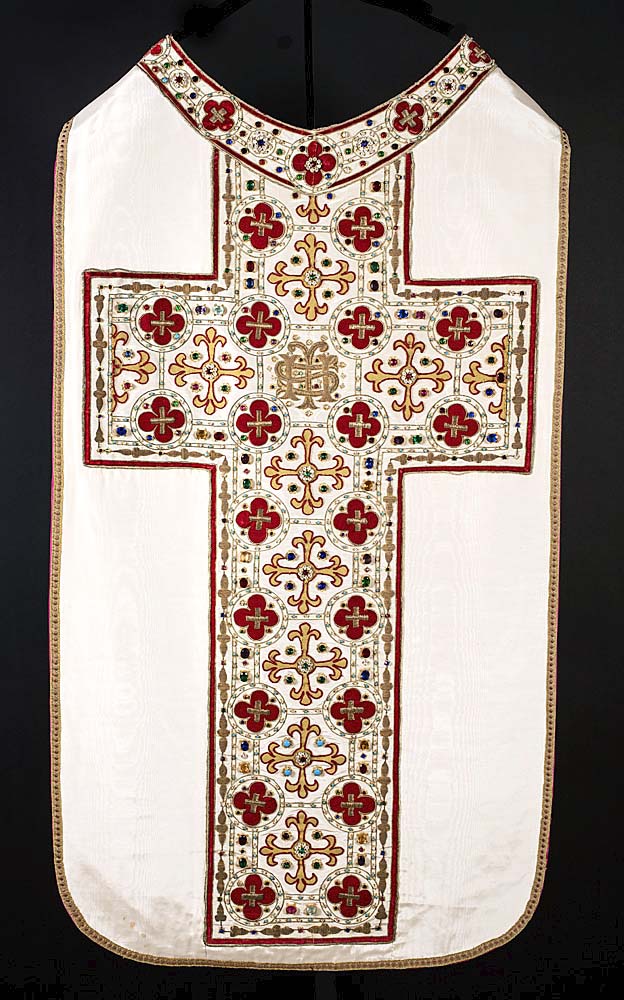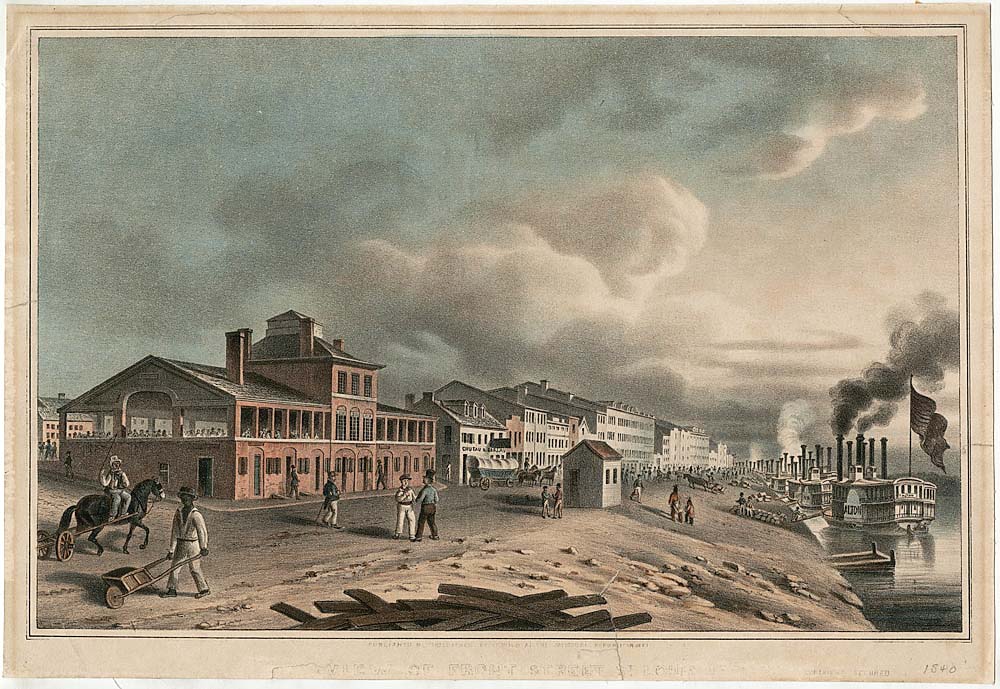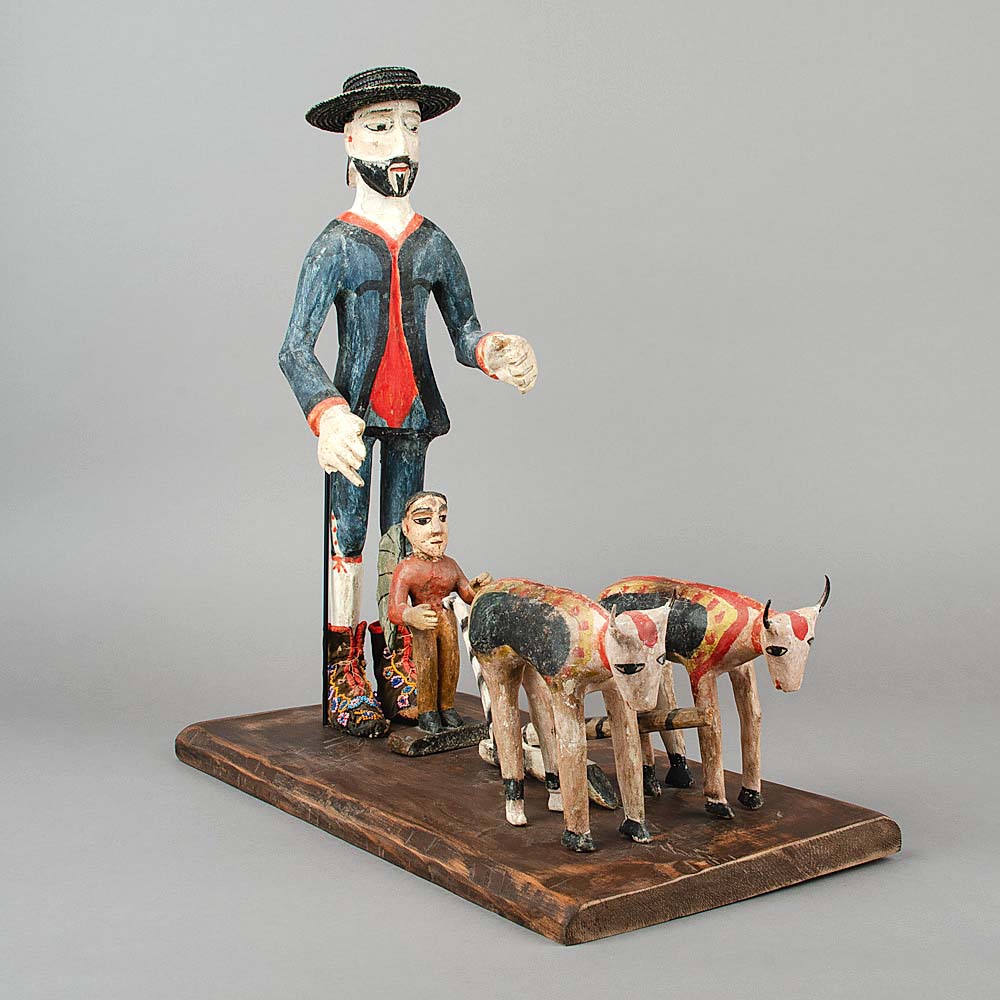
Bulto of San Ysidro by Jose Benito Ortega (1858-1941), late Nineteenth Century-early Twentieth Century, wood, gesso, paint, cotton and glass beads. Museum of International Folk Art. Bequest of Cady Wells, 1954.
By Madelia Hickman Ring
NEW YORK CITY — Expansion into the Western United States in the Nineteenth Century has been glamorized and glorified by the mythologized “Wild West.” A new exhibition at the New-York Historical Society — “Acts of Faith: Religion and the American West” — presents a revisionist and fuller, more inclusive picture by exploring the interplay between religion and westward expansion. Far beyond the glamorized version of pop culture and Hollywood, the exhibition presents a West populated by preachers, pilgrims and visionaries, and home to sacred grounds and cathedrals that kindled spiritual feeling from the woodlands of New York all the way to the valleys of California. The narrative highlights the experiences and traditions of people who, voluntarily or involuntarily, took part in this chaotic and transformative era, including diverse Native peoples, Protestant missionaries, Mormon settlers, Catholic communities, African American migrants, Jewish traders and Chinese immigrant workers.
Dr Marci Reaven, vice president for history exhibitions and the exhibition’s co-curator alongside Lily Wong, the museum’s associate curator, says, “The idea behind ‘Acts of Faith’ is that religion has been an underappreciated and oversimplified aspect of the history of western expansion, as it’s conventionally told. We’re eager to share with visitors all that we’ve learned about the early roots of our religious diversity and about how religion has been both a unifier and divider over the course of our history.
“The rarely told stories captured in ‘Acts of Faith’ deepen and enrich our understanding of US western expansion and its relationship to American religion for a broad public. Visitors will learn how expansion of the United States during this time period increased religious diversity but also intensified public and private attempts to bring about uniformity.”
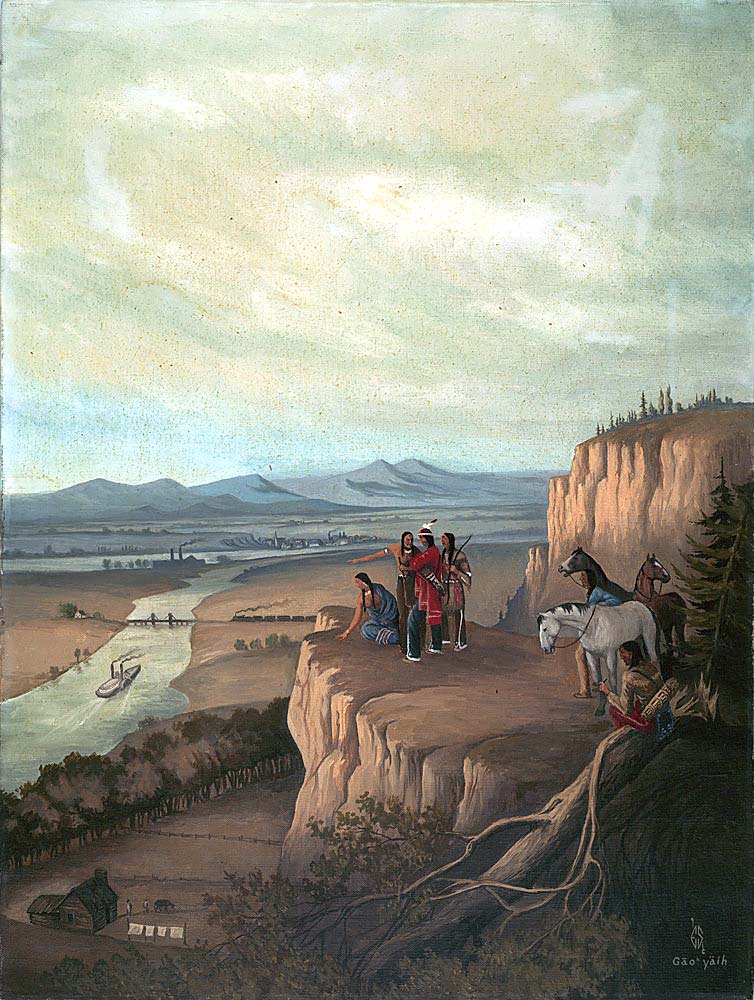
“Progress” by Ernest Smith (Tonawanda Seneca, Heron Clan, 1907-1975), 1935, watercolor. Courtesy of RMSC, Rochester, N.Y.
Antiques and The Arts Weekly asked Reaven if there was a catalyst to launching this exhibition at this particular moment in the museum’s history.
“We thought it was time to explore the category of religion. Although we’ve done a number of exhibits about topics central to the notion of “We the People,” we realized a few years ago that none of these had focused on religion. Given religion’s importance in our history and culture, and given the groundbreaking nature of American protections for religious liberty, we thought that this would be a contribution we could make. We also thought it would be particularly interesting and useful to look at religion during the heyday of expansion on our own continent, which was a time of US nation building.”
“Religion is playing an ever-greater role in America’s public life, and contests over the parameters of religious liberty are frequently in the news,” she continued. “At the same time, scholars in history and religious studies and Native studies have been revealing important new understandings about how religion has helped shape our past and present. However, very few people have access to this growing body of knowledge. Exhibits and public history in general can bring such information and ideas to a wider public and provide historical background and context for issues that people are confronting now. That’s what we set out to do with ‘Acts of Faith.’ We worked closely with wonderful scholars who generously shared their expertise with us, and we’ve tried to pass it on to visitors in as vivid and exciting a manner as possible.”
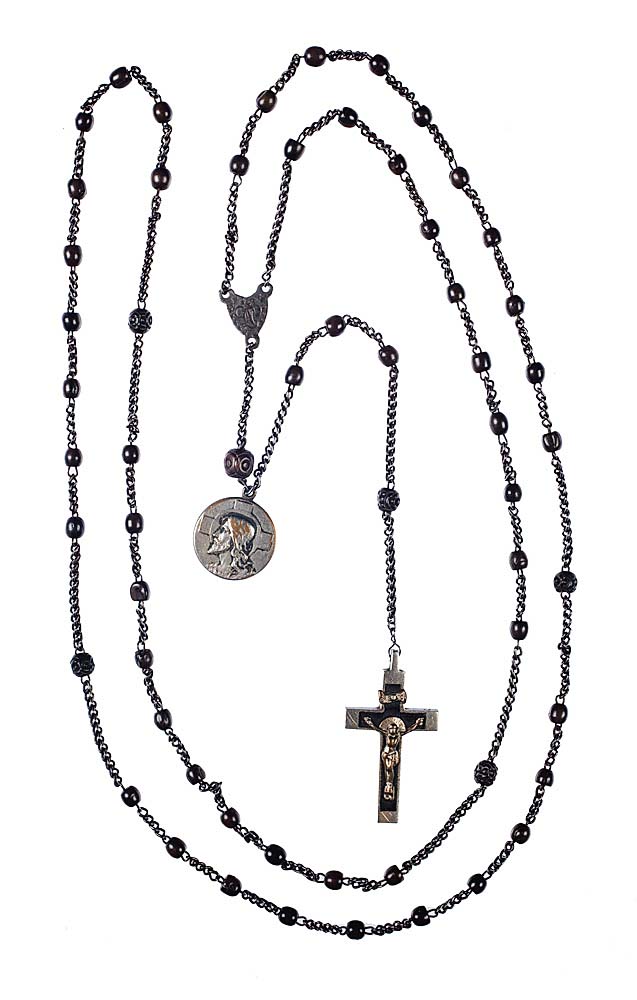
Rosary belonging to sister Rosanna Dant, SL, Nineteenth Century, wood and metal. The Sisters of Loretto Heritage Center.
The highlights of the exhibition — which is comprised of more than 60 objects and dozens of images and documents and most of which are ones Reaven suspects visitors will not have seen before — are multifold and compelling. Among them are Robert Weir’s portrait of the famous Seneca chief Sagoyewatha, or “Red Jacket”; a bulto (wooden statue) of San Ysidro Labrador from Nineteenth Century New Mexico on loan from the Museum of International Folk Art in Santa Fe; and an emigrant trunk labeled “From Basel to Salt Lake City, Utah” that belonged to a convert to the Church of Jesus Christ of Latter-day Saints and is on loan from the Utah Historical Society.
These are accompanied by specially commissioned installations, multimedia elements and immersive displays, including a dollhouse-sized diorama of St Louis’ first Rosh Hashanah ceremony; a large mural depicting a San Ysidro Feast Day in Taos, N.M.; an illustrated interactive journey to the California goldfields with 49er Sarah Royce; a life-size, lifelike figure of African American pioneer Clara Brown; and an evocation of a Nineteenth Century classroom. Media elements include visualizations of the Mormon exodus to Utah and the saga of Indian boarding schools as well as an audio guide on the Bloomberg Connects app, offering readings, music and expert commentary from a range of historical and contemporary voices.
As in most exhibitions, the curators learned something along the way.
“This show, in particular, provided windows into topics and experiences that were new to us. We’ve tried to infuse the excitement of that discovery into our displays, and very much hope that visitors will feel similarly. Some of the biggest surprises for us had to do with countering conventional ideas about western expansion. We learned, for example, that no obvious or “manifest” destiny determined the decisions people made. Instead, individuals, communities and nations organized themselves to confront their challenges. We came to understand that although the West may be mythologized as an incubator for individualists, more often it was community that people sought. And we realized the extent to which the history of western expansion includes not only voluntary but also involuntary migrants, notably Native peoples who were pushed west through the combined forces of colonialism. Religion figured into all these stories.”
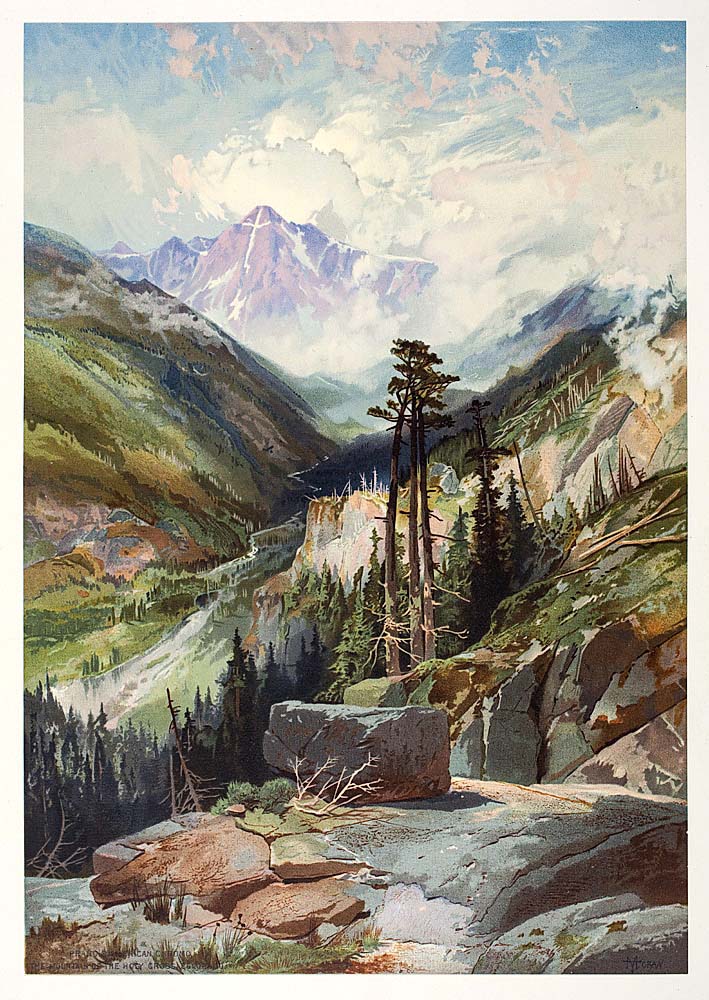
“Mountain of the Holy Cross” by Thomas Moran (1837-1926), paper. Patricia D. Klingenstein Library, New-York Historical Society.
The exhibition is divided into three distinct sections that — taken together — spans nearly the entire century and take visitors through various eras of westward expansion, unified by distinctive stories. It is introduced by a prologue that features a large-scale map of North America overlaid with a variety of notable quotations from contemporary sermons, speeches, journals, letters and government documents.
The ways in which people drew on religion to define and defend their futures in a changing West is addressed in the first section, “Homelands & New Lands, 1810s-1840s.” A prayer book from the Six Nations of Indians and a Ernest Smith’s painting of Handsome Lake preaching in a longhouse both speak to the efforts of the Haudenosaunee (Iroquois) peoples to cling to their faith in the face of dispossession and the ravaging of their culture. These are shown — alongside bibles and religious tracts — with an architectural drawing of Nassau Street’s Tract House, which was where evangelical efforts were concentrated.
The second section, “Trails & Trials, 1840s-1860s,” takes place in a United States, enlarged after the Mexican American war. It shows how settlers and residents imagined their communities. It features stories that have long-dominated popular retellings of Western history, including such trails that are so famous/infamous that their names live on: the Oregon, California, Mormon and Santa Fe Trails, and the Trail of Tears. The museum aims to show that religion accompanied those taking those journeys, providing comfort both along the way and at the ends. Artifacts in this part of the exhibition include a set of vestments belonging to Catholic Archbishop Jean Baptiste Lamy, on loan from the Sisters of Loretto Heritage Center, evoke his efforts to convey the splendor and authority of the church while he traveled the Santa Fe Trail.
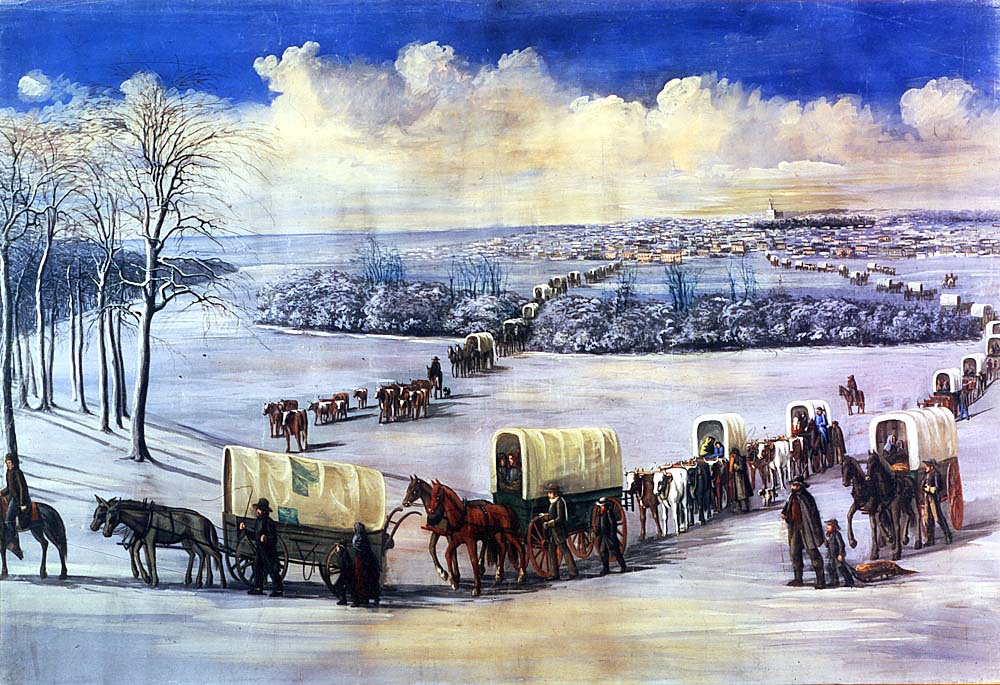
“Crossing the Mississippi on the Ice” by C.C.A. Christensen (1831-1912), circa 1878, tempera on muslin, 77-7/8 by 111 inches. Brigham Young University Museum of Art. Gift of the grandchildren of C.C.A. Christensen, 1970.
In the final section, “Insider & Outsiders, 1860s-1890s,” the ideas of right/wrong, and inclusion/exclusion are explored. Newly settled or recently expanded areas that saw increased diversity and religious liberties also saw conflicts and contests between residents who struggled for dominance. Objects featured address a number of varying topics, including a model of Salt Lake City’s grand Mormon temple (polygamy), a painting of the Sun Dance by a Lakota holy man (government’s ban on sacred Indigenous traditions) and an account of Chinese bone repatriation (the role of religion in the anti-Chinese movement). The role of religion in schools that was a cornerstone of Nineteenth Century American is viewed through an extensive selection of objects, maps, cartoons and photographs.
Religious tolerance and liberties continue to be provocative and evolving subjects today, much as they were in the Nineteenth Century. The exhibition concludes with a series of questions that ask viewers what can be learned from the past and how those lessons can be considered today.
Following its debut in New York City, the exhibition will travel to the Eiteljorg Museum in Indianapolis, Ind., with additional tour stops to be announced.
“Acts of Faith: Religion and the American West” will be on view at the New-York Historical Society through February 25.
The New-York Historical Society is at 170 Central Park West at Richard Gilder Way (77th Street). For information, 212-873-3400 or www.nyhistory.org.

